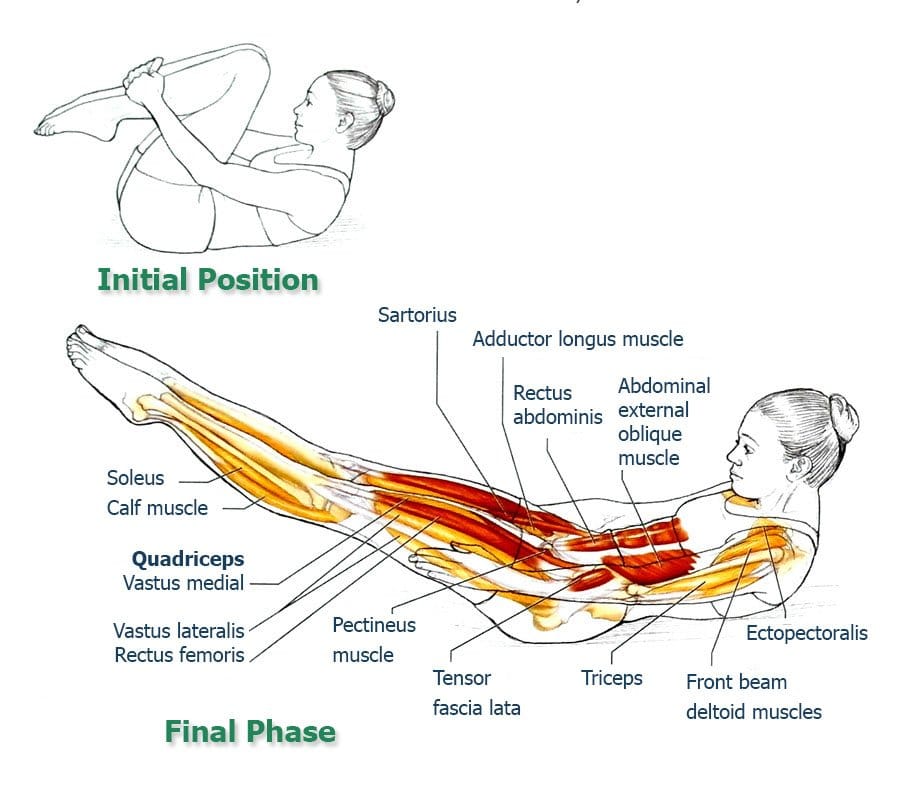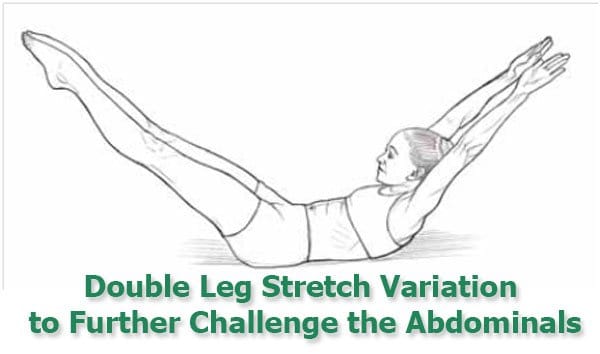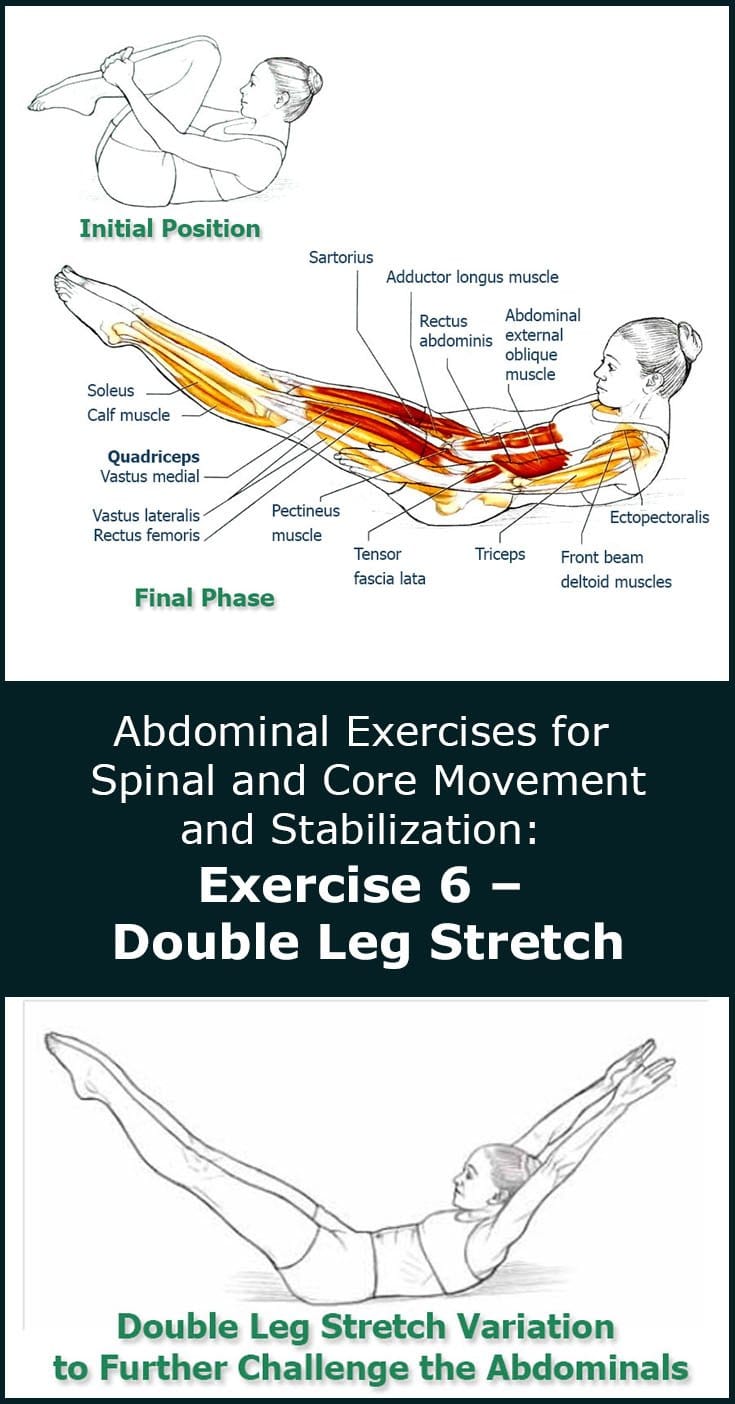The Double Leg Stretch is the next part of our program. Its aim is to strengthen your abs and obliques and help stabilize your core, protecting your low back. The Double Leg Stretch helps you keep your body stable while you pull the arms and legs in and out.
The series so far:
- Exercise #1: Leg Circle
- Exercise #2: Roll-Up
- Exercise #3: Hundred
- Exercise #4: One Leg Stretch
- Exercise #5: Stretching the Hamstring
- Exercise #6: Double Leg Stretch (you are here)
- Exercise #7: Crisscross
- Final Exercise: Teaser
The Double Leg Stretch introduces challenging moves, but if you learn how to perform it correctly your abs will tighten, legs will be strong and relaxed and your lower back safe.
Exercise 6 – Double Leg Stretch

Initial position. Lie on your back with the head and shoulder blades off the mat in a chest lift position, both knees bent and pulled toward the chest with one hand on each shin. The other leg is suspended above the mat at a height at which the lower back can maintain contact with the mat. Both knees are straight and both feet are gently pointed outward:
- Inhale and move the arms down to the sides of the legs while at the same time you extend both legs to a height at which the lower back maintains a solid contact with the mat (consult the illustration);
- Exhale and bend the legs back in toward the chest while the hands return to the starting position on the shins. Repeat the sequence 10 times.
Make Sure You:
- In the initial position, use the abdominal muscles to pull together the pelvis and the lower part of the rib cage, creating a slight C curve. Make sure to maintain contact of the lower back with the mat throughout the exercise;
- While maintaining the curled position of the trunk, straighten both legs out by using the hip extensors to start to move the thighs away from the chest. The hip flexors then support the weight of the legs and keep the legs from lowering too far. The hip adductors gently pull the legs together as the knee extensors straighten them and the foot plantar flexors point the feet in phase 2, before the hip flexors and knee flexors draw the legs in during the next phase;
- In the 2nd phase, as the arms move, think of moving them toward the feet as the elbow extensors straighten the elbows. Throughout the exercise, the shoulder flexors keep the arms from dropping on the mat;
- Mental image: the movement should have a dynamic reach-and-gather flow. Think of the limbs as springs being extended on the reach phase and then recoiling on the gather phase.
Additional Notes
Double Leg Stretch represents a large jump in difficulty from One Leg Stretch. In the outstretched position, you have both of the legs held far away from the axis of motion. This requires a certain abdominal strength and skill to maintain the desired core stability. While providing a valuable challenge for most, similar to that described for Hundred, this exercise may not be appropriate for many. If having difficulty feel free to use the modification mentioned below.
Modifications
Raise the legs to a height that to allows you to maintain a stable position of the pelvis to avoid arching the lower back. If hamstring tightness is an issue, the legs can be only partially straightened.
Variation

For a bigger abs challenge, reach the arms overhead as shown on the illustration above. Now circle the arms around to the initial position as the legs reach out and then come back in. You can challenge the abdominals even more by keeping the thighs just beyond vertical when the knees bend and by curling the trunk up higher as described in One Leg Stretch variation.


